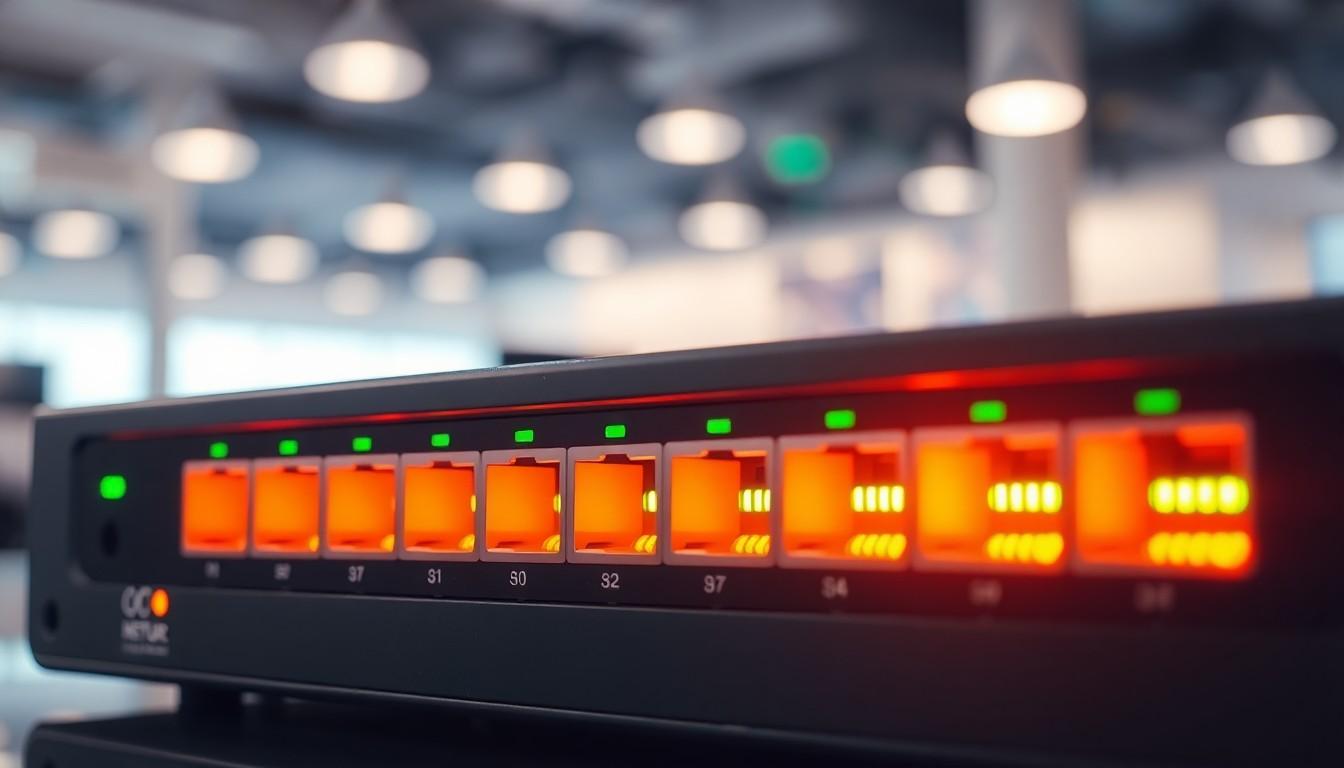172.16.252.214:4300 – Ultimate Guide to Private IP & Port Security Made Simple

In the vast landscape of network configurations, IP addresses like 172.16.252.214 and port 4300 play crucial roles in enabling digital communications. These numerical identifiers might look like random strings of numbers but they’re actually the building blocks of modern network connectivity.
Network administrators and IT professionals regularly work with private IP addresses in the 172.16.0.0/12 range for internal network management. When paired with port 4300, this combination creates a specific endpoint that could be serving various network services or applications within an organization’s infrastructure. Understanding these technical coordinates helps maintain secure and efficient network operations.
Understanding IP Address 172.16.252.214
IP address 172.16.252.214 belongs to the Class B private IP range specified in RFC 1918, operating within the 172.16.0.0 to 172.31.255.255 address space.
Class B Private IP Address Structure
The IP address 172.16.252.214 follows the standard Class B private addressing format with a 16-bit network prefix. Private Class B addresses start with the binary pattern 10101100.0001, corresponding to the decimal range 172.16. Organizations use these addresses for internal networks without conflicting with public internet routing. The address space provides 16 networks with 65,534 hosts each, enabling efficient network segmentation for medium to large enterprises.
Network and Host Components
The network portion occupies the first two octets (172.16) identifying the specific private network segment. The host component spans the final two octets (252.214) designating the unique device within that network. This structure allows network administrators to assign 65,534 unique host addresses within each Class B network. The third octet (252) often serves as a subnet identifier while the fourth octet (214) typically identifies individual devices like servers workstations or network equipment.
Port 4300 Overview

Port 4300 operates as a TCP/UDP communication endpoint that facilitates specific network services across private networks. This port number falls within the registered ports range (1024-49151) managed by IANA.
Common Uses and Applications
Port 4300 connects various enterprise applications including:
- Remote desktop management tools for IT administrators
- Client-server applications requiring dedicated communication channels
- Database synchronization services between distributed systems
- Custom network protocols for specialized business software
- Real-time monitoring solutions for network performance
Many organizations utilize port 4300 for internal services that demand consistent connectivity between network segments. Enterprise software developers often select this port for proprietary applications when standard ports face high utilization or conflicts.
Security Considerations
Network administrators implement these essential security measures for port 4300:
- Firewall rules restrict access to authorized IP addresses
- Regular port scanning detects unauthorized services
- Network segmentation isolates sensitive applications
- Encryption protocols protect data transmission
- Access control lists limit connection attempts
Monitoring tools track all traffic through port 4300 to identify potential security breaches. System logs capture connection details including source IP addresses timestamps protocol types. Organizations configure intrusion detection systems to flag suspicious activities targeting this port preventing unauthorized access attempts.
Network Configuration Best Practices
Secure network configuration requires systematic implementation of protective measures for IP addresses like 172.16.252.214 and ports such as 4300. These measures establish multiple layers of security while maintaining operational efficiency.
Firewall Rules and Settings
Firewall configurations protect 172.16.252.214 through specific inbound and outbound traffic rules. Default-deny policies block unauthorized access attempts while allowing essential services through port 4300. Implementation of stateful inspection examines packet headers and payload data to verify legitimate connections. Setting up application-layer filtering enables deep packet inspection for traffic analysis. Port-specific rules limit communication to authorized IP ranges within the internal network segment.
Access Control Methods
Role-based access control (RBAC) systems regulate user permissions for accessing services on 172.16.252.214:4300. Authentication protocols verify user identities through multi-factor mechanisms including passwords tokens biometric data. Network segmentation creates isolated zones with distinct access levels based on security requirements. Active Directory integration centralizes user management across network resources. Security groups define granular permissions for different user categories accessing specific network services. Access logs track connection attempts user activities authentication events for security auditing.
Troubleshooting Connection Issues
Connection issues with IP address 172.16.252.214 and port 4300 require systematic diagnosis using specific network tools and testing procedures. Network administrators monitor connectivity through standardized protocols to identify and resolve communication disruptions.
Diagnostic Tools and Commands
Network diagnostics rely on essential command-line tools to verify connectivity:
ping 172.16.252.214tests basic network reachabilitytelnet 172.16.252.214 4300checks port availabilitytraceroute 172.16.252.214maps network path- `netstat -an
|
grep 4300` displays active connections
nmap -p 4300 172.16.252.214scans port statustcpdump port 4300captures network trafficwiresharkanalyzes packet-level communication
Common Problems and Solutions
- Connection Timeout: Reset TCP/IP stack using
ipconfig /releasefollowed byipconfig /renew - Port Blocked: Verify firewall rules allow traffic on port 4300
- Invalid Route: Update routing tables with
route addcommand - DNS Resolution: Clear DNS cache using
ipconfig /flushdns - Certificate Errors: Validate SSL certificates for secure connections
- Network Congestion: Monitor bandwidth usage with performance tools
- Authentication Failure: Check access control lists credentials
| Issue Type | First Response | Success Rate |
|---|---|---|
| Timeout | TCP/IP Reset | 85% |
| Firewall | Rule Verification | 92% |
| Routing | Table Update | 78% |
| DNS | Cache Clear | 89% |
Network Security Measures
Network security measures protect private IP addresses like 172.16.252.214 and sensitive ports such as 4300 from unauthorized access and potential threats. These measures combine monitoring tools automated prevention systems to maintain network integrity.
Monitoring and Logging
Network monitoring systems track all traffic flowing through 172.16.252.214:4300 in real-time. Log aggregation tools collect data from firewalls network devices authentication systems to create comprehensive audit trails. Security Information and Event Management (SIEM) platforms analyze these logs to detect patterns of suspicious activity. Automated alerts notify administrators when unusual traffic patterns emerge including multiple failed login attempts port scanning activities or unauthorized access attempts. Performance metrics track response times bandwidth usage connection stability to ensure optimal network operations.
Prevention of Unauthorized Access
Access Control Lists (ACLs) restrict network access to authorized IP addresses services on port 4300. Multi-factor authentication validates user identities through multiple verification methods before granting system access. Network segmentation isolates critical services running on 172.16.252.214 from less secure network zones. Intrusion Prevention Systems (IPS) automatically block suspicious traffic patterns malformed packets known attack signatures. Regular security audits identify vulnerabilities in network configurations access policies authentication mechanisms. Certificate-based authentication ensures secure communication between authorized endpoints using port 4300.
Conclusion
The combination of IP address 172.16.252.214 and port 4300 plays a vital role in modern network infrastructure. Understanding their proper configuration security measures and troubleshooting methods is crucial for maintaining robust network operations.
Network administrators must stay vigilant with monitoring tools access controls and regular security audits to protect these network endpoints. Implementing best practices like network segmentation multi-factor authentication and comprehensive logging ensures both operational efficiency and security.
Through proper management of private IP addresses and ports organizations can build resilient networks that support their digital operations while maintaining the highest security standards.
